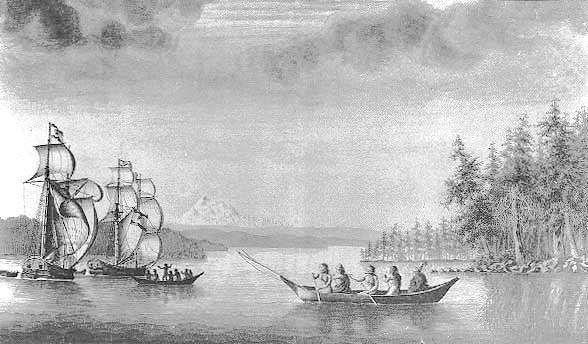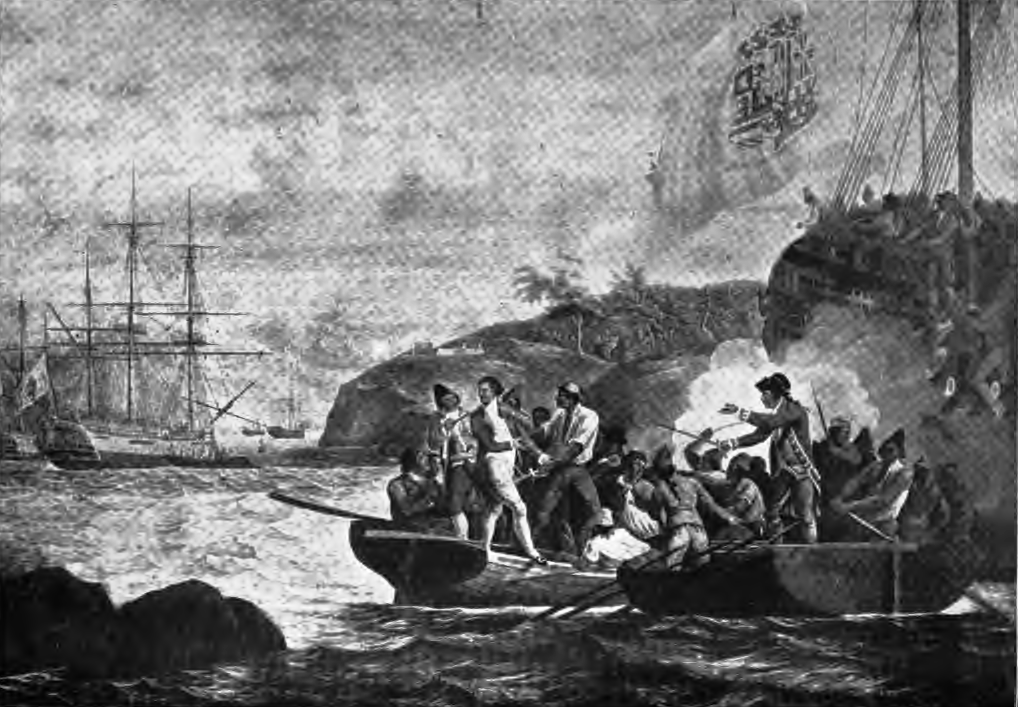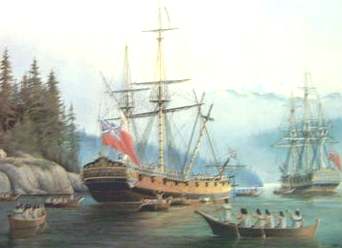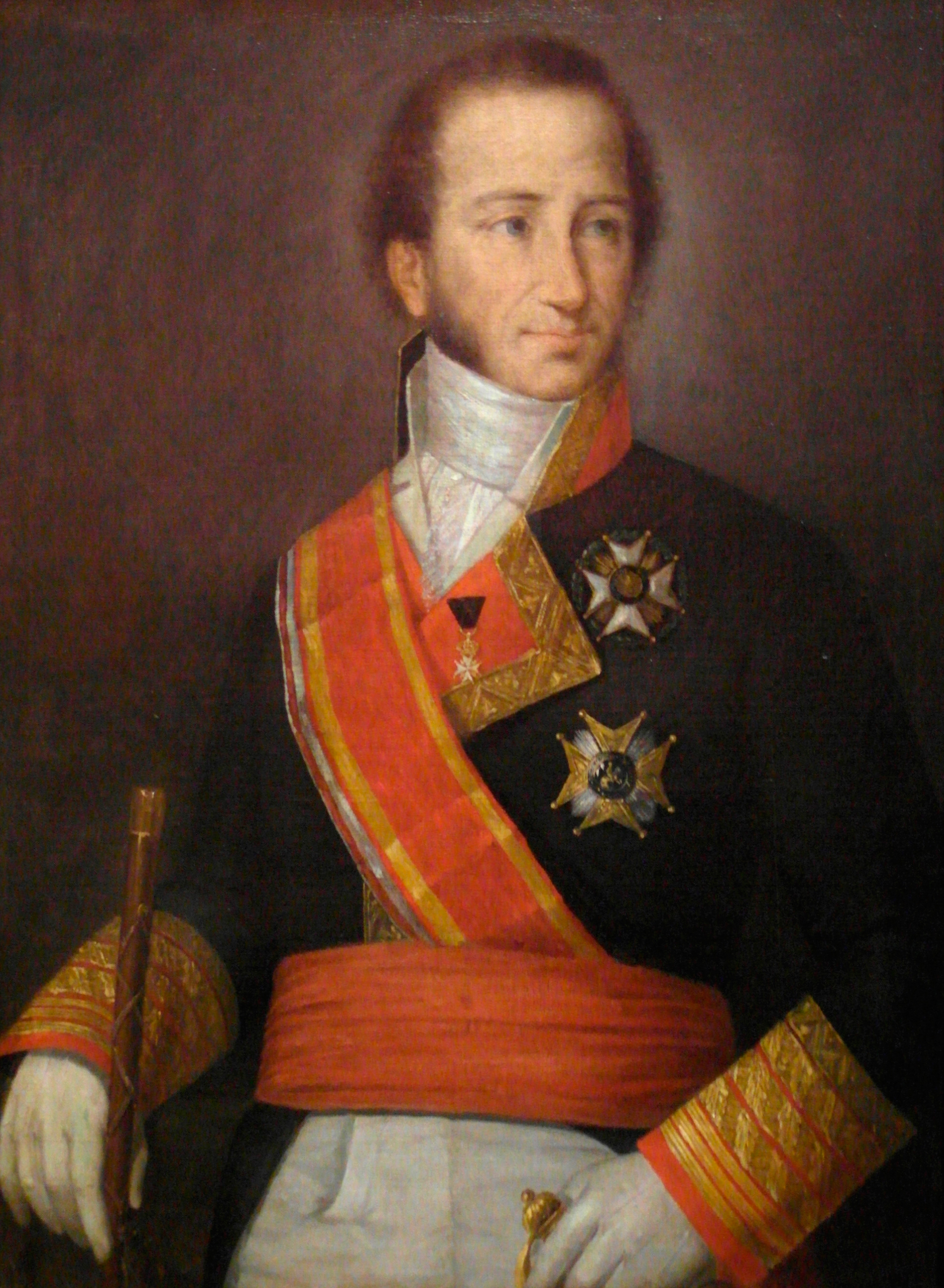|
Sutil (ship)
''Sutil'' was a brig-rigged schooner (Spanish ''goleta'') built in 1791 by the Spanish Navy at San Blas, New Spain. It was nearly identical to '' Mexicana'', also built at San Blas in 1791. Both vessels were built for exploring the newly discovered Strait of Georgia, carried out in 1792 under Dionisio Alcalá Galiano, on ''Sutil'', and Cayetano Valdés y Flores, on ''Mexicana''. During this voyage the two Spanish vessels encountered the two British vessels under George Vancouver, HMS ''Discovery'' and HMS ''Chatham'', which were also engaged in exploring the Strait of Georgia. The two expeditions cooperated in surveying the complex channels between the Strait of Georgia and Queen Charlotte Strait, in the process proving the insularity of Vancouver Island. After this first voyage ''Sutil'' continued to serve the San Blas Naval Department, making various voyages to Alta California and the Pacific Northwest coast. Construction To meet the need for additional ships following the 1789 ... [...More Info...] [...Related Items...] OR: [Wikipedia] [Google] [Baidu] |
Sutil And Mexicana
Sutil may refer to: *Adrian Sutil, German Formula One racing driver * Francisco Sutil, Spanish professional football player *Sutil (ship), a Spanish ship * Sutil (album), an album by pop singer Charytín *Sutil Channel , image = Looking up Sutil Channel, Quadra Island.jpg , image_size = 260px , alt = , caption = Looking up Sutil Channel from Quadra Island , image_bathymetry = Locmap-SutilChannel.png , alt_b ..., a channel in British Columbia * Sutil Island, a named rock near Santa Barbara Island {{disambig ... [...More Info...] [...Related Items...] OR: [Wikipedia] [Google] [Baidu] |
Pinnace
Pinnace may refer to: * Pinnace (ship's boat), a small vessel used as a tender to larger vessels among other things * Full-rigged pinnace The full-rigged pinnace was the larger of two types of vessel called a pinnace in use from the sixteenth century. Etymology The word ''pinnace'', and similar words in many languages (as far afield as Indonesia, where the boat "pinisi" took it ..., a ship-rigged vessel popular in northern waters during the 17th through 19th centuries {{disambiguation ... [...More Info...] [...Related Items...] OR: [Wikipedia] [Google] [Baidu] |
Nootka Crisis
The Nootka Crisis, also known as the Spanish Armament, was an international incident and political dispute between the Nuu-chah-nulth Nation, the Spanish Empire, the Kingdom of Great Britain, and the fledgling United States of America triggered by a series of events revolving around sovereignty claims and rights of navigation and trade. It took place during the summer of 1789 at the Spanish outpost Santa Cruz de Nuca, in Nootka Sound on Vancouver Island in present-day British Columbia, Canada. The commander of the outpost, Jose Esteban Martínez, seized some British commercial ships which had come for the maritime fur trade and to build a permanent post at Nootka Sound. Public outcry in Britain led to the mobilization of the Royal Navy, and the possibility of war. Both sides called upon allies, the Dutch joined the side of Britain; Spain mobilized their navy and her key ally France also mobilized theirs, but the latter soon announced they would not go to war. Without French help ... [...More Info...] [...Related Items...] OR: [Wikipedia] [Google] [Baidu] |
Pacific Northwest
The Pacific Northwest (sometimes Cascadia, or simply abbreviated as PNW) is a geographic region in western North America bounded by its coastal waters of the Pacific Ocean to the west and, loosely, by the Rocky Mountains to the east. Though no official boundary exists, the most common conception includes the U.S. states of Oregon, Washington (state), Washington, and Idaho, and the Canadian province of British Columbia. Some broader conceptions reach north into Alaska and Yukon, south into northern California, and east into western Montana. Other conceptions may be limited to the coastal areas west of the Cascade Mountains, Cascade and Coast Mountains, Coast mountains. The variety of definitions can be attributed to partially overlapping commonalities of the region's history, culture, geography, society, ecosystems, and other factors. The Northwest Coast is the coastal region of the Pacific Northwest, and the Northwest Plateau (also commonly known as "British Columbia Interi ... [...More Info...] [...Related Items...] OR: [Wikipedia] [Google] [Baidu] |
Alta California
Alta California ('Upper California'), also known as ('New California') among other names, was a province of New Spain, formally established in 1804. Along with the Baja California peninsula, it had previously comprised the province of , but was split off into a separate province in 1804 (named ). Following the Mexican War of Independence, it became a territory of Mexico in April 1822 and was renamed in 1824. The territory included all of the modern U.S. states of California, Nevada, and Utah, and parts of Arizona, Wyoming, Colorado, and New Mexico. In the 1836 Siete Leyes government reorganization, the two Californias were once again combined (as a single ). That change was undone in 1846, but rendered moot by the U.S. military occupation of California in the Mexican-American War. Neither Spain nor Mexico ever colonized the area beyond the southern and central coastal areas of present-day California and small areas of present-day Arizona, so they exerted no effective cont ... [...More Info...] [...Related Items...] OR: [Wikipedia] [Google] [Baidu] |
Vancouver Island
Vancouver Island is an island in the northeastern Pacific Ocean and part of the Canadian Provinces and territories of Canada, province of British Columbia. The island is in length, in width at its widest point, and in total area, while are of land. The island is the largest by area and the most populous along the west coasts of the Americas. The southern part of Vancouver Island and some of the nearby Gulf Islands are the only parts of British Columbia or Western Canada to lie south of the 49th parallel north, 49th parallel. This area has one of the warmest climates in Canada, and since the mid-1990s has been mild enough in a few areas to grow Mediterranean Sea, Mediterranean crops such as olives and lemons. The population of Vancouver Island was 864,864 as of 2021. Nearly half of that population (~400,000) live in the metropolitan area of Greater Victoria, the capital city of British Columbia. Other notable cities and towns on Vancouver Island include Nanaimo, Port Alberni, ... [...More Info...] [...Related Items...] OR: [Wikipedia] [Google] [Baidu] |
Queen Charlotte Strait
, image = Canadian pilot, near Port Hardy BC.jpg , alt = , caption = A pilot boat plies Queen Charlotte Strait near Port Hardy , image_bathymetry = Locmap-QCS-Hecate-Dixon.png , alt_bathymetry = , caption_bathymetry = Queen Charlotte Strait is located southeast of Queen Charlotte Sound , location = British Columbia , group = , coordinates = , type = Strait , etymology = , part_of = , inflow = , rivers = , outflow = , oceans = Pacific Ocean , catchment = , basin_countries = , agency = , designation = , date-built = , engineer = , date-flooded = , length = , width = , area = , depth = , max-depth = , volume = , residence_time = , salinity ... [...More Info...] [...Related Items...] OR: [Wikipedia] [Google] [Baidu] |
HMS Chatham (1788)
HMS ''Chatham'' was a Royal Navy survey brig that accompanied HMS ''Discovery'' on George Vancouver's exploration of the West Coast of North America in his 1791–1795 expedition. ''Chatham'' was built by King, of Dover and launched in early 1788. She was purchased for navy service on 12 February 1788. The Vancouver Expedition ''Chatham'' first significant voyage was Vancouver's five-year mission to the South Seas and Pacific Northwest coast of America. Her commander was Lieutenant William Robert Broughton, with 2nd Lieutenant James Hanson. In November 1791, while exploring the South Pacific, Broughton's crew were the first Europeans to sight the Chatham Islands, which they named after their ship. Among the other achievements of ''Chatham'' crew was the exploration of the Columbia River as far as the Columbia River Gorge, reaching present-day eastern Multnomah County east of Portland and north west of Mount Hood. A plaque erected by the State of Oregon along Interstate 84 ... [...More Info...] [...Related Items...] OR: [Wikipedia] [Google] [Baidu] |
HMS Discovery (1789)
HMS ''Discovery'' was a Royal Navy ship launched in 1789 and best known as the lead ship in George Vancouver's exploration of the west coast of North America in his famous 1791-1795 expedition. She was converted to a bomb vessel in 1798 and participated in the Battle of Copenhagen. Thereafter she served as a hospital ship and later as a convict ship until 1831. She was broken up in 1834. Early years ''Discovery'' was launched in 1789 and purchased for the Navy in 1790. She was named after the previous HMS ''Discovery'', one of the ships on James Cook's third voyage to the Pacific Ocean. The earlier ''Discovery'' was the ship on which Vancouver had served as a midshipman. ''Discovery'' was a full-rigged ship with a standard crew complement of 100 including a widow's man. She had been designed and built for a voyage of exploration to the Southern whale fisheries. ''Discovery''s first captain was Henry Roberts, with Vancouver as his first lieutenant. But when the Noo ... [...More Info...] [...Related Items...] OR: [Wikipedia] [Google] [Baidu] |
George Vancouver
Captain George Vancouver (22 June 1757 – 10 May 1798) was a British Royal Navy officer best known for his 1791–1795 expedition, which explored and charted North America's northwestern Pacific Coast regions, including the coasts of what are now the Canadian province of British Columbia as well as the US states of Alaska, Washington and Oregon. He also explored the Hawaiian Islands and the southwest coast of Australia. Vancouver Island, the city of Vancouver in British Columbia, Vancouver, Washington in the United States, Mount Vancouver on the Canadian–US border between Yukon and Alaska, and New Zealand's fourth-highest mountain, also Mount Vancouver, are all named after him. Early life George Vancouver was born in the seaport town of King's Lynn (Norfolk, England) on 22 June 1757 - the sixth and youngest child of John Jasper Vancouver, a Dutch-born deputy collector of customs, and Bridget Berners. He came from an old respected family. The surname Vancouver comes ... [...More Info...] [...Related Items...] OR: [Wikipedia] [Google] [Baidu] |
Cayetano Valdés Y Flores
Cayetano Valdés y Flores Bazán (1767–1835) was a commander of the Spanish Navy, explorer, and captain general who served in the French Revolutionary and Napoleonic Wars, fighting for both sides at different times due to the changing fortunes of Spain in the conflict. He took part in a number of naval battles, including the Great Siege of Gibraltar, the Battle of Cape St Vincent, and the Battle of Trafalgar. He was an explorer, most notable in the Pacific Northwest, where he and Dionisio Alcalá Galiano conducted the first circumnavigation of Vancouver Island, in partial cooperation with George Vancouver. Over his long career he achieved the highest ranks in the Spanish Navy, eventually being named Captain General of Cadiz and Captain General of the Spanish Navy. Early career He was born in Seville in 1767, and was the nephew of Antonio Valdés y Fernández Bazán. Cayetano Valdés joined the Naval Academy in Cadiz as a ''guardiamarina'' (midshipman) in 1781. After finishin ... [...More Info...] [...Related Items...] OR: [Wikipedia] [Google] [Baidu] |
Dionisio Alcalá Galiano
Dionisio Alcalá Galiano (8 October 1760 – 21 October 1805) was a Spanish naval officer, cartographer, and explorer. He mapped various coastlines in Europe and the Americas with unprecedented accuracy using new technology such as chronometers. He commanded an expedition that explored and mapped the Strait of Juan de Fuca and the Strait of Georgia, and made the first European circumnavigation of Vancouver Island. He reached the rank of brigadier and died during the Battle of Trafalgar. He sometimes signed his full surname, Alcalá-Galiano, but often used just Galiano. The published journal of his 1792 voyage uses just the name Galiano, and this has become the name by which he is most known. Early life Galiano was born in Cabra, Córdoba, Spain, in 1760. He entered the Spanish navy in 1771, at the age of 11, and enrolled in the Spanish naval school in 1775. After graduation in 1779 he entered active service. He participated in several hydrographic surveys and became skille ... [...More Info...] [...Related Items...] OR: [Wikipedia] [Google] [Baidu] |


.jpg)




